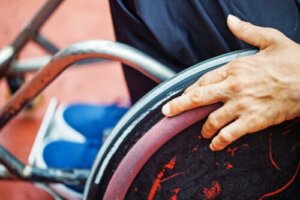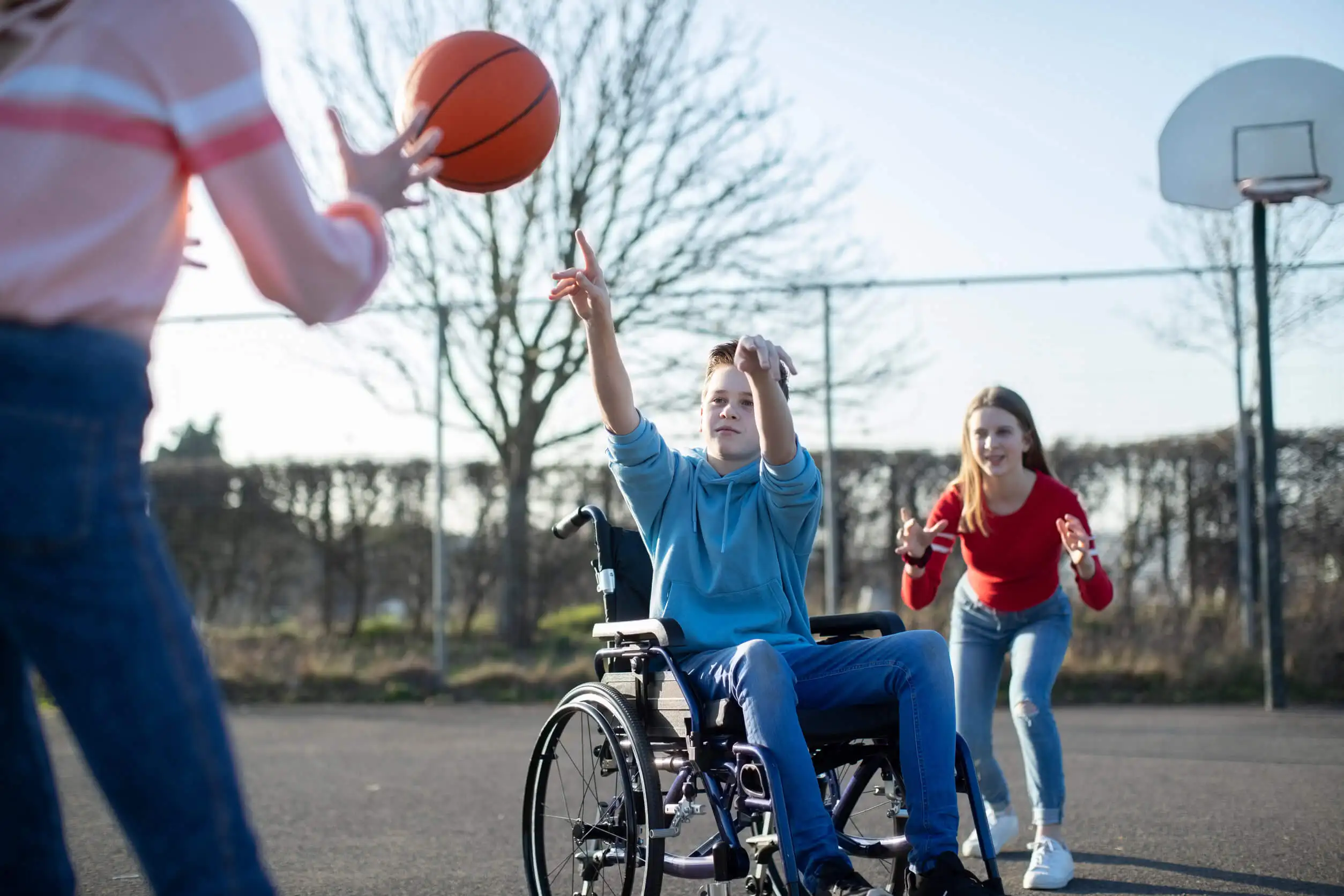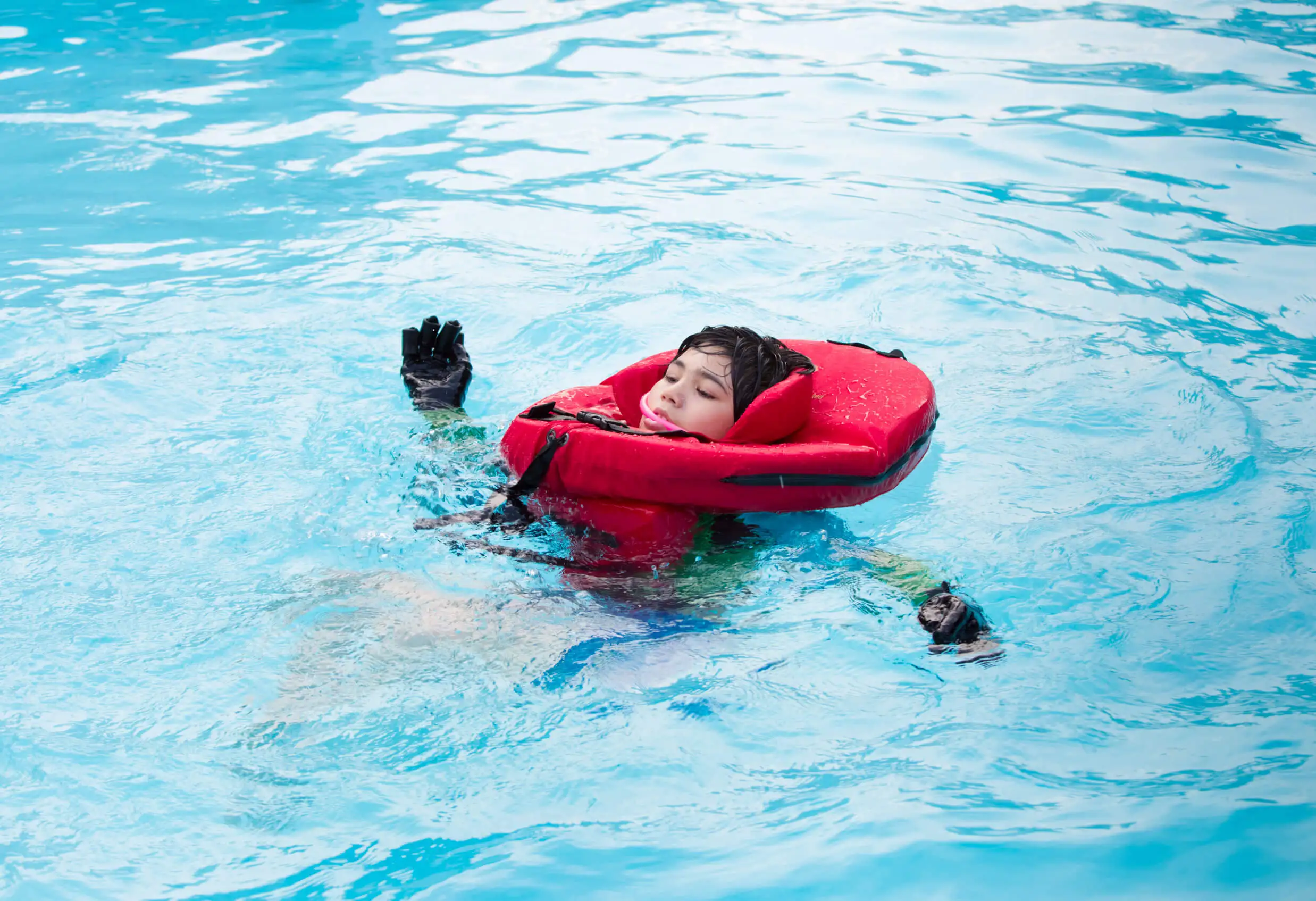14 Exercises for People with Limited Mobility


Reviewed and approved by the doctor Diego Pereira
Certain exercises are beneficial for people with limited mobility. Although there’s a false belief that this condition prevents physical activity, the truth is that there are several sports and training routines that can be implemented without any inconvenience.
As stated in a study published in the Journal of Aging Research, it’s a good idea to promote active lifestyles among this population as a preventive and control strategy to improve mobility. So, what are the recommended exercises for people with limited mobility? In the following article, we’ll share them in detail.
The importance of exercise in people with limited mobility
The fact that there is a reduction in a person’s ability to move autonomously does not necessarily signify a health problem. However, a deterioration of physical or mental condition may occur due to lack of exercise.
Some studies mention the fact that people with limited mobility may start to develop stress, anxiety, and distress regarding their situation.
Obesity and cardiovascular problems are also associated with a sedentary lifestyle. However, exercise is the best tool to combat and avoid such consequences.
For all of these reasons, it’s advisable to stay in good physical condition, in order to improve overall health and well-being. In other words, you should not stay still under any circumstances but strive to lead an active life.
We think you may also enjoy reading this article: 13 Recommended Physical and Respiratory Exercises for People With COPD
The benefits of exercise for people with limited mobility
The benefits of exercise are proven, even for people who have some condition or impairment that affects their ability to move around. Let’s take a closer look at its most important effects.
Development and learning
In children with limited mobility, exercise enhances their development and learning, both from a cognitive and motor, and proprioception point of view.
Physical activities also involve concentration and intellectual effort, as well as memorization, in order to understand and remember what needs to be done. In addition, exercise demands perseverance, patience, and self-control.
Mood and sociability

Exercise releases endorphins, serotonin, and other hormones that are activated to improve mood and reduce stress and depression. It also makes it possible to interact with others and to let go of confinement and worries. These effects are enhanced when done outdoors.
Self-esteem and autonomy
Feeling that they can do some physical activity changes people’s perception of their own capabilities. Thus, their self-esteem rises and they learn to overcome their limitations. Incidentally, this allows them to assume with greater autonomy the performance of various tasks and reduce the feeling of dependence.
Structure and life project
Having an exercise routine provides a certain structure, in the sense of organizing one’s time. Both in the medium and long term, it’s possible to set goals that are determinant in terms of the sense of self-improvement.
Rest
Among the various benefits of regular exercise, it’s also worth mentioning the fact that it helps relaxation and improves the quality of sleep.
14 exercise routines for people with limited mobility
There are several kinds of routines for people with limited mobility. Whatever the case, warm-up, stretching and flexibility, and cardiovascular and strength exercises should be incorporated into them.
1. Arm stretches
This can be done by placing the arm above the head, bending the elbow, and dropping the hand down behind the neck. With your free hand, push the elbow back a little. Then repeat, changing arms.
Another exercise consists of raising the right arm and pointing the hand to the front, but a little diagonally. The other arm should be brought underneath, bringing the left hand towards the right shoulder. The left hand is then pushed up slightly.
2. Medicine ball throw
Take the medicine ball and raise it above your head. Then, turn it to the right – tightening your abdomen – and throw it downwards. Repeat, but this time do the exercise while turning to the other side.
3. Resistance bands
It’s possible to do several exercises with elastic resistance bands:
- Work the dorsal (back) muscles: To do this, pull the band towards the body, with one arm first and then the other.
- Exercise the pectorals: You can do this by pulling with both arms at the same time and opening wide.
- Work the biceps: Grasp the band with the palm upwards and bend the elbow.
- Exercise the triceps: With your back to the wall, pull the strap over your head.
4. Wall push-ups
Stand in front of a wall, at a distance equal to the length of your outstretched arm. From there, rest your palms on the wall – at shoulder height – and let your body fall forward while bending your elbows and returning to the starting position.
5. Regular push-ups
Start lying face down on a mat on the floor, palms on the side of the shoulders. Lift your torso while pushing hard. This exercise is ideal for the arms, shoulders, trapezius, and lower back.
6. Shoulder presses
To do this exercise, dumbbells are placed at the sides of the shoulders – elbows bent – and the weights are pushed up overhead.
7. Front lifts
This is also a shoulder exercise. You start with the dumbbells at the sides of your body, thrusting them forward until they’re at face level. There are two grip forms: palms down or palms inward.
8. Parallel lifts
On a chair with arms or on the armrest of the wheelchair, you have to hold on tight and try to lift yourself up, as in the parallel bars. This is a strength exercise and it’s advisable to do it when you’re already in pretty good physical condition. If you’re doing this activity from a wheelchair, make sure you don’t forget the chair brake.
9. Supermans
This exercise is called this because it’s reminiscent of the Man of Steel’s unique way of flying. It’s effective for the lumbar area, but it’s not recommended when there are injuries or pain in the back.
It begins lying face down. The hands are stretched forward and torso is lifted, lifting the face, chest, and shoulders off the floor.
10. Abdominal crunches
You do crunches lying face up on a mat; arms crossed over the chest with your left hand on your right shoulder. Take your head, neck, and shoulders off the floor. You can perform several reptitions.
Another option in the same position consists of alternately bending the body to one side and the other, bringing the hand to the knee. This works the lateral abdominals.
11. Knee raises
If your have mobility in your legs, sit on a chair, raise your knee as far as possible, bringing it close to the chest; hold the position for a few seconds, and then change legs. In cases with no mobility, you can place your hands under the knees (hamstring) and help lift.
12. Foot Stretch
To do this exercise, the feet are flexed while pointing the toes toward the calf. If there’s no mobility, bend down, take the tip of the foot and pull with force, but without abruptness. This exercise strengthens the muscles in the area and activates circulation.
13. Boxing
It’s also possible to go to a gym or place a sandbag at home, in an open space. It’s advisable to position yourself at a distance that forces you to stretch your arms. Then, alternate series of strong and slow strokes with fast strokes. Use both hands.
Like this article? You may also like to read: Don’t Have Time to Go to the Gym? You Can Exercise at Home
14. Swimming and water aerobics

According to research, participation in water sports such as swimming and water polo is an excellent tool to improve the quality of life as well as the social inclusion of people with mobility problems or limitations.
On the other hand, water aerobics has also become a popular alternative. In the water, it’s easier for the person with limited mobility to maintain balance while doing the cardiovascular activity.
Tips to start doing these exercises
It’s important to take into account the following recommendations, to avoid injury, pain, frustration, and even abandoning them.
Adapt the exercises
There are varying degrees of limited mobility. Therefore, it’s possible to do certain activities adapted to your capacity. For example, even if it’s not possible to play basketball, there are exercises that patients with knee osteoarthritis can perform, such as walking and swimming, among others.
Gradually increase the difficulty
Overexertion only leads to injury. Therefore, it’s advisable to start gently and gradually increase time, repetitions, and weight. This also helps to maintain motivation.
Regularity and rest
The main benefits of physical activity come from regularity, rather than intensity when training. It’s not bad to exercise daily, but you must also give your body time to rest.
Vary your routines
It’s a good idea to do varied exercises so that your doesn’t become monotonous. This should include two to three weekly sessions of strength training and stretching for the various muscle groups, as well as cardio exercises and even yoga.
In relation to this discipline, research has shown that it helps reduce depressive symptoms, anxiety, and fear of pain in people with limited mobility.
Some final recommendations for exercising with limited mobility
According to the U.S. Department of Health and Human Services, people with limited mobility should engage in physical activity that is not only beneficial for their health, but also for their health and well-being. According to the U.S. Department of Health and Human Services, people with limited mobility should get 150 minutes of moderate physical activity per week.
Whatever the condition, inactivity should be avoided as much as possible. All of this is in order to prevent health problems related to sedentary lifestyles.
However, before starting any exercise routine, it’s advisable to talk to your doctor to find out which are the most recommended, depending on your condition.
Finally, it’s always important to exercise under the supervision of a professional trainer who has experience working with people with limited mobility.
All cited sources were thoroughly reviewed by our team to ensure their quality, reliability, currency, and validity. The bibliography of this article was considered reliable and of academic or scientific accuracy.
- Banno, M., Harada, Y., Taniguchi, M., Tobita, R., Tsujimoto, H., Tsujimoto, Y., Kataoka, Y., & Noda, A. (2018). Exercise can improve sleep quality: a systematic review and meta-analysis. PeerJ, 6, e5172. https://doi.org/10.7717/peerj.5172
- Basso, J. C., & Suzuki, W. A. (2017). The effects of acute exercise on mood, cognition, neurophysiology, and neurochemical pathways: A review. Brain Plasticity, 2(2), 127–152. https://doi.org/10.3233/BPL-160040
- Briones Fernández, F. J., Contreras López, B. E., Gacitúa Díaz, M. F. S., González Araya, F. I., Inostroza Flores, F. J. I., & Turne Gallardo, M. C. (2017). Proyecto de prescripción de actividad física en pacientes con movilidad reducida y Diabetes Mellitus tipo dos. Universidad Andrés Bello. https://repositorio.unab.cl/xmlui/handle/ria/8007
- CDC. (2022). Actividad física para personas con discapacidades. Centers for Disease Control and Prevention. https://www.cdc.gov/ncbddd/spanish/disabilityandhealth/features/physical-activity-for-all.html
- Curtis, K. J. B. (2017). The evaluation of yoga interventions for individuals with limited mobility: Pain, psychological variables, and mindfulness.Universidad de York. https://yorkspace.library.yorku.ca/xmlui/handle/10315/35452
- Digital Communications Division (DCD). (2015). Programs for people with disabilities. Hhs.gov; US Department of Health and Human Services. https://www.hhs.gov/programs/social-services/programs-for-people-with-disabilities/index.html & https://health.gov/espanol/myhealthfinder/problemas-salud/diabetes/mantente-activo-fisicamente
- Gómez-Díaz, M., & Jiménez-García, M. (2018). Inteligencia emocional, Resiliencia y Autoestima en personas con discapacidad física y sin discapacidad. Enfermería Global, 17(2), 263–283. https://doi.org/10.6018/eglobal.17.2.291381
- Investigación, R. S. (2021). Programa de actividad física en la fibromialgia. ▷ RSI – Revista Sanitaria de Investigación. https://revistasanitariadeinvestigacion.com/programa-de-actividad-fisica-en-la-fibromialgia/
- Macías García, D., & González López, I. (2012). Inclusión social de personas con discapacidad física a través de la natación de alto rendimiento. Apunts Educació Física i Esports, 110, 26–35. https://doi.org/10.5672/apunts.2014-0983.es.(2012/4).110.03
- Marciales, S. A. (n.d.). Artes marciales: Boxeo Paralímpico. Solo Artes Marciales. Retrieved February 5, 2023, from https://soloartesmarciales.com/blogs/news/artes-marciales-boxeo-paralimpico
- Musich, S., Wang, S. S., Ruiz, J., Hawkins, K., & Wicker, E. (2018). The impact of mobility limitations on health outcomes among older adults. Geriatric Nursing (New York, N.Y.), 39(2), 162–169. https://doi.org/10.1016/j.gerinurse.2017.08.002
- Ortiz, L. S. (2017). Empleo del ejercicio en la fisioterapia como tratamiento de la osteoartrosis de rodilla en adultos mayores. Anales Médicos de la Asociación Médica del Centro Médico ABC, 62(1), 44–53. https://www.medigraphic.com/cgi-bin/new/resumen.cgi?IDARTICULO=71244
- Rosenberg, D. E., Bombardier, C. H., Hoffman, J. M., & Belza, B. (2011). Physical activity among persons aging with mobility disabilities: shaping a research agenda. Journal of Aging Research, 2011, 708510. https://doi.org/10.4061/2011/708510
- Smith, Brett & Kirby, Nathalie & Skinner, Bethany & Wightman, Leanne & Lucas, Rebekah & Foster, Charlie. (2018). Physical activity for general health benefits in disabled adults: Summary of a rapid evidence review for the UK Chief Medical Officers’ update of the physical activity guidelines. https://www.gov.wales/sites/default/files/publications/2022-03/physical-activity-for-general-health-benefits-in-disabled-children-and-disabled-young-people.pdf
- Wang, Y., & Ashokan, K. (2021). Physical exercise: An overview of benefits from psychological level to genetics and beyond. Frontiers in Physiology, 12, 731858. https://doi.org/10.3389/fphys.2021.731858
This text is provided for informational purposes only and does not replace consultation with a professional. If in doubt, consult your specialist.








